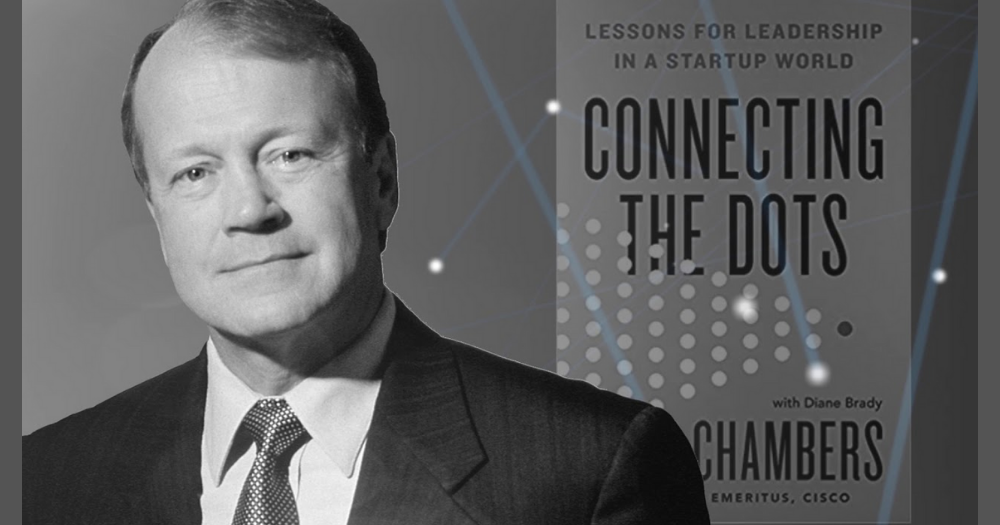Connecting The Dots – John Chambers
Connecting the Dots is a great book from John Chambers, the ex. Chief Executive Officer of CISCO. I also had an opportunity to listen to and meet John at a Churchill Club event in the San Francisco, Bay Area. John was born in an affluent family in West Virginia. His parents were doctors. He was a dyslexic kid (Richard Branson, Virgin Founder was also a dyslexic kid) and had a tutor who helped overcome his dyslexia. West Virginia was a place known for making coal. However, the state continued to make coal for a long time (they were doing the same good thing for too long). They did not innovate and the State lost its shine. John worked at IBM and Wang Laboratories and he found them to do the same good thing for too long. These lessons and failures helped John run CISCO efficiently. John also emphasizes that curiosity and age are not mutually exclusive.
Disruption: John mentions that 3-5% growth is unlikely to be disruptive. Disruption is never an easy or comfortable process. The risk of failure is high. You can’t achieve bold results with incremental change. You cannot transform a country or a company or a career or anything else by tinkering with a few things while sticking to the path you are on. The biggest mistake that most companies make is they keep doing the right thing for too long. The disruption or 3-5% growth not just applies to companies but also to individual careers. If you have been doing the same thing for too long without any innovation or magic or world-changing things, you are likely to be left behind in a fast-growth environment.
Customers, Partners, Crisis, Meetings: In a crisis, do not panic. Setbacks teach you a lot of lessons. Relentlessly focus on customers. John reviews his key accounts every night. John stresses the importance of partners and he recommends that partners need to make at-least make 5X of the revenue CISCO makes selling a product. This way they are always motivated and it is in their best interest to serve CISCO customers well. He prepares well for a meeting and focuses on the outcome. He summarizes the notes from the meeting and works on action items. Before he heads to the next meeting he tries to take a break (drink a diet coke) or prepares well.
Other Learnings: John does not yell or get angry. However, he is tough. Respect and Kindness should not be perceived as signs of weakness. Recruiting is a key constituent of a CEO’s job and he is always recruiting. When CISCO loses a sale to a competitor he tries to find out who were the key people involved in the sale and scouts for them. Recruiting can take months to years. The most talented people are usually not on the market. He also talks to leaders and finds out who they are nurturing. He also recommends not to oversell to customers (especially things they do not need). This is an easy way to make a buck and lose a customer. John thinks the Internet of Things (IoT) will be bigger than the Internet. CEO’s should be the biggest risk-takers. Digitization will transform life on a scale never seen before in human history. You build a great company by focusing on what you want to be in the longer term and working fearlessly towards that goal. Write down top priorities and what % of the time do you spend on each of those. You will be surprised. Believe in dreams and make them come true, Do not operate in silos. Dominate. Voice will be the next platform and dwarf all other forms of the user interface. Billion-dollar companies will just have 2-3 people and a network of partners and networks. The measure of a great company is its ability to create shared wins for everyone. When things go well, you are not as good as people think you are and when things go bad you are not as bad as people think you are.
Key Takeaways: If I were to summarize some of my key takeaways reading the book, it would be,
- Spot market (industry) transitions
- Do not do the same good thing for too long
- The Internet of Things will be bigger than the Internet (market transition)
- Voice will be the next user interface.




Leave a Reply